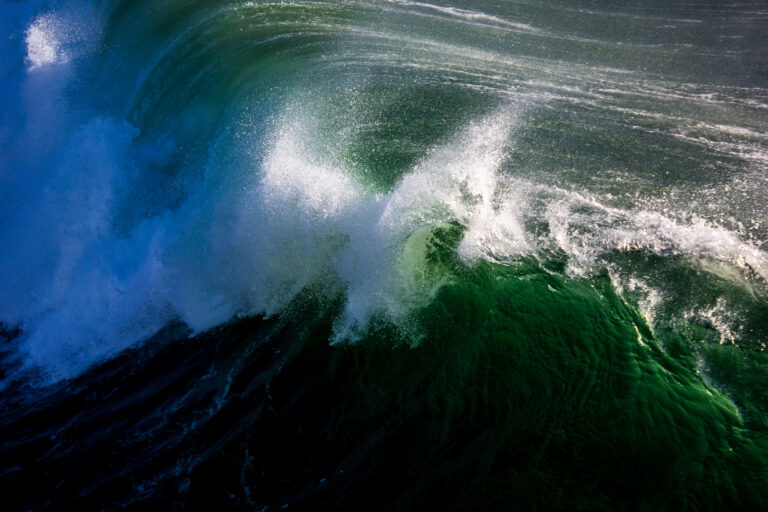
What Do You Really Need to Outsmart a Tsunami?
Does the idea of relying solely on your phone or sirens during a tsunami scare you? You’re not alone. People often yearn for signs they can see, hear, or feel, especially if technology fails. Read on, and you’ll learn how to identify tsunami warning signs using nothing but your senses, and stay safer when it matters most.
Why This Topic Matters More Than You Think
In a world reliant on tech alerts and satellite data, many overlook natural warning signs that have saved lives for centuries. Understanding these cues can mean getting ahead of danger when systems fail, or when they simply don’t exist in remote areas.
A Fair View: People Don’t Trust Nature Alone
Some believe natural cues are unreliable or myth. They argue that in turbulent times, panicking over receding water or restless animals could cause more harm than good.
That’s a valid point. Untrained response can backfire. But when combined with basic knowledge, nature’s signals become powerful aids, not distractions.
Natural Tsunami Signs Anyone Can Spot
Water Receding Suddenly
One of the clearest warnings is when the sea pulls back dramatically, exposing the ocean floor, reefs, or stranded fish.
This “drawback” effect is often the trough of the wave arriving first. As NOAA and Geosciences sources explain:
“If you observe this, immediately move inland or to higher ground.”
The Australian+8American Geosciences Institute+8ScienceABC+8AwfulFunny.comMagnifyMinds+3Redwood Coast Tsunami Work Group+3TIME+3
Roaring or Groaning Ocean Sounds
A tsunami can produce a deep, roaring noise, like a train or jet engine, lasting several minutes.
Witnesses from coastal disasters in Chile, Japan, and Indonesia report hearing this before the waves hit.
American Geosciences Institute
Animal Behavior, but With Caveats
Yes, animals sometimes behave oddly before tsunamis: elephants moving inland, coastal birds flying away, and even insects fleeing.
However, scientific evidence is mixed. Some studies show increased activity hours before earthquakes, but no consistent tsunami prediction. Animals likely respond to vibrations or pressure changes, not the tsunami directly.
WIRED+1Animals Around The Globe+1
“No definitive evidence that animals sense tsunamis directly.”
ChaseDay.com+4Harbour Thoughts+4National Geographic+4
What the Science Confirms
- Water drawdown and loud ocean noise are historically reliable signs.
- Ground shaking from nearby quakes is a serious warning—if it’s strong or long-lasting, evacuate immediately.
en.wikipedia.org+15noaa.gov+15Redwood Coast Tsunami Work Group+15
But animal behavior, while intriguing, remains unreliable as a sole warning.
Putting It All Together
Observing multiple signs together increases confidence:
- Ground shakes → water recedes → ocean roars → animals flee
→ immediate evacuation inland or upward safe zone
This layered approach helps avoid panic or delay.
Dark Humor Moment (Barely There)
It’s ironic that people trust apps more than fish flopping on the beach—but hey, sometimes the mussels are muttering warnings first. You get the idea.
Real-World Examples Matter
During the 2004 Indian Ocean tsunami, coastal communities in Simeulue island survived largely thanks to oral folklore: stories telling them to evacuate after earthquakes and ocean retreat. In contrast, many others didn’t survive because they ignored natural cues.
en.wikipedia.org+11focusingonwildlife.com+11Animals Around The Globe+11WIRED+3ScienceABC+3AwfulFunny.com+3Geoscience.blog+3TIME+3MagnifyMinds+3en.wikipedia.org+1
Similarly, survivors of Chile’s 1960 tsunami reported instinctive evacuation after seeing sea drawdown, even without sirens or official warnings.
So Why Do People Still Wait for Tech?
Reliability isn’t always visible. Sirens, phone alerts, and text messages feel official.
On the other hand, noticing receding water or animal flickers can seem subjective or vague.
However, during communication outages or when technology lags, nature doesn’t wait.
Your Simple Tsunami Survival Toolkit
- Know your evacuation route.
- After any quake, if you feel a shake, move immediately inland and uphill.
- If you see the ocean vanish or hear a roaring or rumble, don’t stay to investigate.
- Watch animal behavior, but don’t rely on it exclusively.
- Teach coastal children these signs. Nature clues save lives.
Final Thoughts: Trust Your Senses, Respect the Power
Modern warning systems are valuable, but they aren’t infallible.
When technology works, trust it. However, when it doesn’t, your eyes, ears, and instincts become your best allies.
Stay alert. Stay high. And remember: sometimes the sea pulls back before it strikes, for a reason.
Sources
- NOAA Natural Tsunami Warning Signs FAQ sciencenewstoday.org+5American Geosciences Institute+5Redwood Coast Tsunami Work Group+5NOAA Ocean Exploration+1
- USGS & NOAA resources on tsunami hazards and drawback effect usgs.gov+1
- Studies on animal behavior and disaster sensing (Max Planck Icarus, USGS, etc.) icarus.mpg.de+1
- Case accounts from Indian Ocean Tsunami 2004 (Simeulue stories, etc.) en.wikipedia.org




